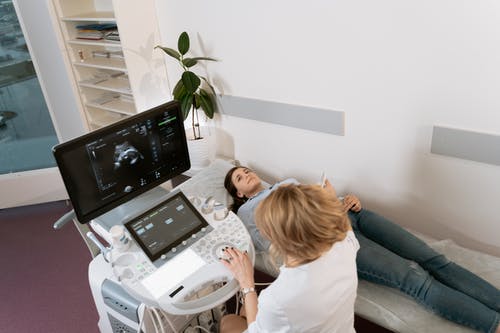The History of Ultrasound Imaging
Ultrasound imaging has transformed medical diagnosis and revolutionized patient care. Examining the history of ultrasound technology allows us to appreciate the journey of innovation and discovery that has led to its widespread use in modern medicine. In this article, we travel back in time to explore the development of ultrasound imaging from its early beginnings to its current applications.

Early Discoveries and Foundations
The history of ultrasound imaging dates back to early sound experiments. Waves of scientists like Pierre Curie and Paul Langevin in the late 1800s and early 1900s. These early discoveries laid the foundation for the development of ultrasound technology and its applications in various fields.
Development of Ultrasound Technology
In the 19th century, major breakthroughs were made in ultrasound technology, including the introduction of piezoelectric crystals for sound generation and detection waves. These advances paved the way for the development of ultrasound transducers that form the basis of modern ultrasound equipment.
Emergence of Medical Applications
Medical applications of ultrasound began to appear in the middle of the 20th century, initially for diagnostic purposes. . Obstetric ultrasound gained traction in the 1950s when the human fetus was first successfully imaged using ultrasound technology. This was the beginning of ultrasound’s journey into the world of medical diagnosis.
Development of Ultrasound Equipment
Ultrasound equipment has developed significantly over the decades, evolving from analog to digital systems capable of real-time imaging. The introduction of Doppler ultrasound allowed physicians to assess blood flow dynamics and vascular abnormalities noninvasively, further expanding the utility of ultrasound in medical diagnosis.
Vasity of Clinical Applications
Ultrasound imaging became common in many medical specialties, including cardiology. radiology, obstetrics, and oncology. Advanced echocardiography has enabled detailed imaging of the heart and its structures, while abdominal ultrasound has become indispensable for evaluating abdominal organs and detecting pathology.
Technological Innovations and Improvements
Technological innovations have continued to advance ultrasound imaging. high-frequency ultrasound for surface imaging and the introduction of 3D and 4D imaging techniques to improve visualization. These advances have improved diagnostic accuracy and patient outcomes.
Ultrasound in Modern Medicine
In modern medicine, ultrasound imaging plays a central role in diagnostic evaluations, guiding therapeutic interventions, and monitoring disease progression. Its noninvasive nature, portability, and real-time imaging make it a versatile tool for healthcare providers in a variety of clinical settings.
Challenges and Future Directions
Despite its many advantages, ultrasound imaging remains challenging, including limitations. for image quality and availability in certain regions. Addressing these challenges requires continuous research and innovation to improve ultrasound technology and improve its usability in clinical practice. Future developments may include artificial intelligence, care ultrasound, and the development of new imaging techniques.
Ultimately, the history of ultrasound imaging is a testament to human ingenuity and scientific progress. Ultrasound technology has come a long way from its humble beginnings as an experimental curiosity to its widespread use in modern medicine. By understanding its historical journey, we gain a deeper understanding of ultrasound’s impact on healthcare and its potential to shape the future of medicine..


